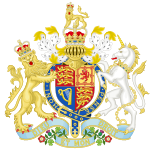- Statute of Anne
-
The Statute of Anne (short title Copyright Act 1709 8 Anne c.19; long title "An Act for the Encouragement of Learning, by vesting the Copies of Printed Books in the Authors or purchasers of such Copies, during the Times therein mentioned") was the first copyright law in the Kingdom of Great Britain (thus the United Kingdom), enacted in 1709 and entering into force on 10 April 1710. It is generally considered to be the first fully-fledged copyright law. It is named for Queen Anne, during whose reign it was enacted.
Several monographs on copyright date the text to 1709. However, due to changes in the reckoning of the New Year from March to January, the correct year of enactment according to the modern calendar would be 1710.[1][2] See also Calendar (New Style) Act 1750.
The Statute replaced the monopoly enjoyed by the Stationer's Company granted in 1557 during the reign of Mary I which, after several renewals, expired in 1695. Under this regime, company members would buy manuscripts from authors but once purchased, would have a perpetual monopoly on the printing of the work. Authors themselves were excluded from membership in the company and could not therefore legally self-publish, nor were they given royalties for books that sold well.
The statute of 1709 vested authors rather than printers with the monopoly on the reproduction of their works. It created a 21 year term for all works already in print at the time of its enactment and a fourteen year term for all works published subsequently. It also required that printers provide nine copies to the Stationer's Company for distribution to the Royal Library, the libraries of Oxford, Cambridge, St Andrews, Glasgow, Aberdeen and Edinburgh, Sion College and the Faculty of Advocates library in Edinburgh.[citation needed] When Ireland united with Great Britain in 1801, Trinity College and King's Inns in Dublin were added as two further depositories.
The Act was repealed by section 1 of the Copyright Act 1842 (c.45). The current law governing UK copyright is the Copyright, Designs and Patents Act 1988.
References
- ^ John Feather, The Book Trade in Politics: The Making of the Copyright Act of 1710, Publishing History, 19(8), 1980, p. 39 (note 3). OCLC 50140799.
- ^ Patterson, Lyman Ray (1968). Copyright in Historical Perspective. Vanderbilt University Press. pp. 3 Fn. 3.
See also
- History of copyright
- Copyright law of the United Kingdom
- Licensing Order of 1643
- Licensing of the Press Act 1662
- Images and transcription of the Statute of Anne, as published 1710
 United Kingdom legislation
United Kingdom legislationPre-Parliamentary legislation Acts of Parliament by states preceding
the Kingdom of Great BritainActs of the Parliament of England to 1483 · 1485–1601 · 1603–1641 · Interregnum (1642–1660) · 1660–1699 · 1700–1706
Acts of the Parliament of Scotland
Acts of the Parliament of Ireland to 1700 · 1701–1800Acts of Parliament of the
Kingdom of Great Britain1707–1719 · 1720–1739 · 1740–1759 · 1760–1779 · 1780–1800
Acts of Parliament of the United Kingdom of
Great Britain and Ireland and the United
Kingdom of Great Britain and Northern IrelandChurch of England Measures Legislation of devolved institutions Acts of the Scottish Parliament
Acts and Measures of the Welsh Assembly
Acts of the Northern Ireland Assembly / of the Northern Ireland Parliament
Orders in Council for Northern IrelandSecondary legislation Categories:- Acts of the Parliament of Great Britain
- United Kingdom copyright law
- Copyright legislation
- 1709 in law
- 1709 in Great Britain
- Repealed Great Britain Acts of Parliament
Wikimedia Foundation. 2010.

